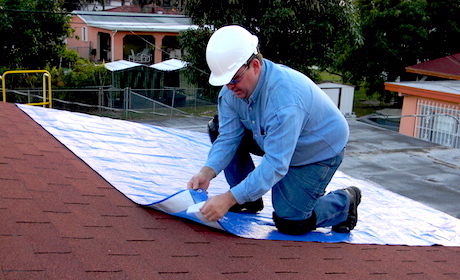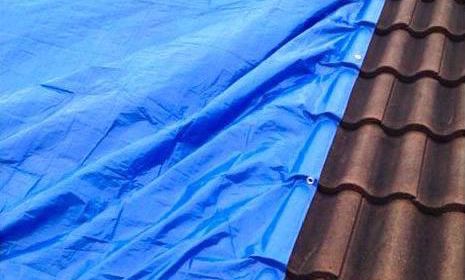About UTARPit™
The Perfect Self-Adhesive Roof Tarp
About the Makers of UTARPit™
Xtarp Solutions, Corp. is a family-owned company dedicated to the development of a self-adhesive roof tarp called UTARPit™.
Easy Installation
It is easy to install and it could be done by a single person within 15-20 minutes. The concept of a quicker, easier and effective solution truly identifies the company’s slogan “No Crew, Just UTARPit™.” This adhesive tarp is the best solution to protect assets pre and post various weather conditions. UTARPit™ adheres to many roof tops, such as Barrel Tile, Asphalt Shingle, Slate, Concrete, and Metal surfaces!
Nail-Free Application
With the conventional method, roofing companies are jeopardizing the integrity of the roof by nailing the tarp through the asphalt shingle; thereby, creating additional expenses to the insurance companies. UTARPit™ eliminates the need for hammers, nails, wood strips, bricks, and sandbags. The bottom line, UTARPit™ saves the insurance companies thousands of dollars by using less material to secure a roof and government entities at the local, state and federal level.
UTARPit™ has an exposure life of 3-6 months, depending on the weather conditions and grade of the product.
High Standards, High Reviews
The UTARPit™ team takes the utmost pride in providing only the highest quality materials and standards in the market.
UTARPit™ can be found online here.



UTARPit™ Advantages
No need for hammer, nails, wood strips, bricks and sandbags.
Preserves tarp integrity.
Minimizes roof damage by omitting nails.
Adheres to many surfaces such as shingle, tile, or concrete.
Can be attached to a barrel tile roof.
Is easy to install.
When included in your hurricane prep kit, UTARPit™ ensures no down-time while waiting for a roofer.
Can be easily removed by a proper roofing contractor.
